How To Choose a Paint Color

Last updated February 20, 2025
With an entire rainbow to choose from, picking paint colors for your home can be
daunting. Luckily, it's easy once you learn the basic rules of color selection. Then you can experiment to find paint colors that bring your unique personality to every room.
Table of Contents
Understanding Color
Pick a Color Scheme
Choose a Paint Finish
Test Paint Colors
Transition Color Throughout Your Home
Find Color Inspiration
Understanding Color

Picking paint colors doesn’t require you to be an expert in color theory. But understanding the following terms makes color selection easier.
- Primary colors: the colors that can be mixed in varying amounts to create all other colors. Red, yellow and blue are primary colors.
- Secondary colors: the colors obtained by mixing two primary colors. Green, orange and purple are secondary colors.
- Hue: the variety of a color. For example, aqua is a hue of blue. Hue is used interchangeably with tone, tint or shade to describe the qualities of a color.
- Tone: a hue that is produced by adding gray pigment to a primary or secondary
pigment. In practice, a paint color may be described as a soft or bright tone. Soft tones
have more gray. Bright tones are closer to the pure primary/secondary color. - Tint: a hue that is produced by adding white pigment to a primary or secondary colored pigment. Paint colors may be described as having a lighter or darker tint. Lighter tints have more white than darker tints.
- Shade: a hue that is produced by adding black pigment to a primary or secondary pigment. In everyday language, shade and tint are used interchangeably to describe how light or dark a color appears.
- Warm colors: hues of red, orange and yellow. Warm colors invoke images of fire and feelings of coziness and excitement.
- Cool colors: hues of blue, purple, and green. Cool colors invoke images of water and nature as well as feelings of calm and relaxation.
In interior design, colors are selected and described based on their mood. A color’s mood is how it makes the viewer feel.
- Passive colors: color hues that create a calming effect and promote focus and relaxation. Blues, greens and purples are passive colors. Generally, passive colors are cool and soft-toned colors. Passive colors are popular choices for bedrooms and make small spaces seem more spacious.
- Active colors: color hues stimulate and excite the mind. Reds, yellows and oranges are active colors. Active colors are warm and bright toned colors. Vibrant and eye-catching, active colors are popular choices for kitchens, offices and accent walls.
- Neutral colors: color hues that do not comfortably fit within one of the primary or secondary color families. Neutral colors include black, white, brown, gray and cream. In interior design, many hues can be neutral as long as they are less vibrant than the accompanying colors. For example, baby pink can act as a neutral when paired with emerald, navy blue or scarlet.
Tip: White is the most popular choice for walls. It makes small spaces feel lighter and bigger and matches all other colors.
Pick a Color Scheme
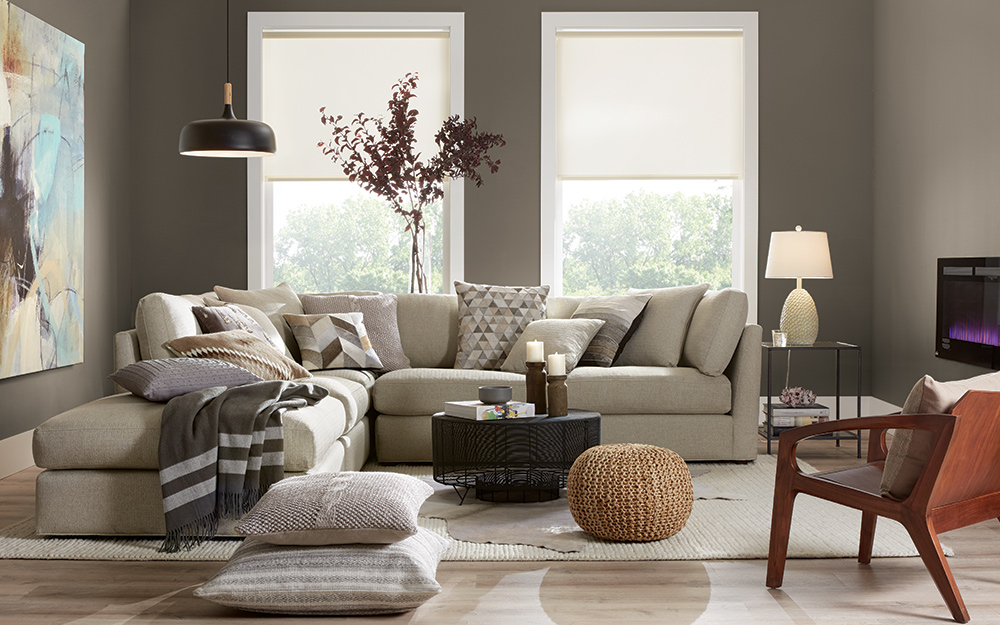
A color scheme is a color plan. Use a color scheme to guide choices for furniture, rugs and walls in a room so that they complement each other. If you are new to design, start with three colors in your color scheme. This basic plan makes it much easier to select paint colors and other items in the room.
Here are some tips for choosing a color scheme:
- Look at a color wheel to understand how color families work together. Analogous colors are next to each other on the wheel. Complementary colors are directly across from each other on the wheel.
- For a monochromatic color scheme, select different hues within the same color family. Neutral colors are perfect for creating an elegant monochromatic color scheme.
- For a bold room, try creating a color scheme using primary colors, also known as a triad color scheme.
- Hues that share the same tone create a harmonious color scheme.
Choose a Paint Finish
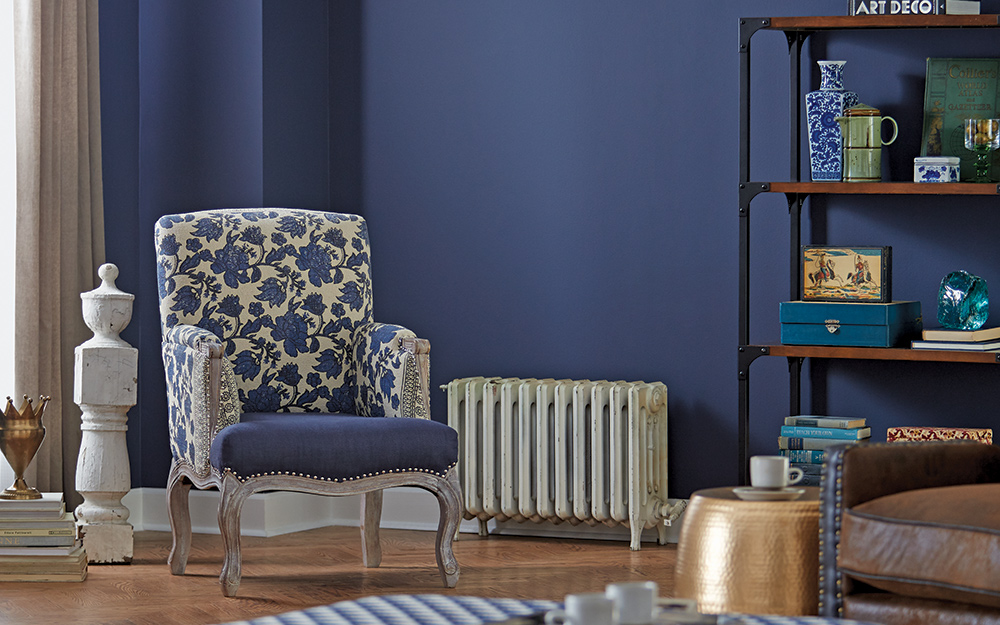
A paint’s finish, or sheen, refers to the amount of light a paint’s surface reflects. Paint that reflects a lot of light appears shiny and makes a room brighter. Paint that reflects very little light appears smooth and flat and makes a room feel cozier.
Below are the types of paint finishes available:
- Matte paint: also known as flat paint, absorbs most light and creates a smooth, almost chalk-like appearance. Matte finish paints are commonly used for ceilings. When dry, matte paints appears lighter than their swatch colors.
- Eggshell paint: has a low sheen with a soft, smooth finish like an eggshell. Eggshell paints stay true to their swatch colors when dry.
- Satin paint: has a soft and pearl-like finish. This is one of the most popular finishes for paint. Like eggshell paint, satin paint finish does not affect the paint color’s appearance.
- Semi-gloss paint: has a shiny, sleek appearance that brightens a room by naturally reflecting light. On the wall, semi-gloss paints appears darker than the swatch color.
- High-gloss paint: reflects the most amount of light of any paint finish. It is very shiny in appearance. Generally, high-gloss paint is used for accents such as doors, moulding and cabinets rather than on walls. Like semi-gloss, a high-gloss finish makes colors seem darker than their swatch.
Tip: If walls have slight imperfections, choose a color in an eggshell or matte paint. These finishes hide defects.
Test Paint Colors
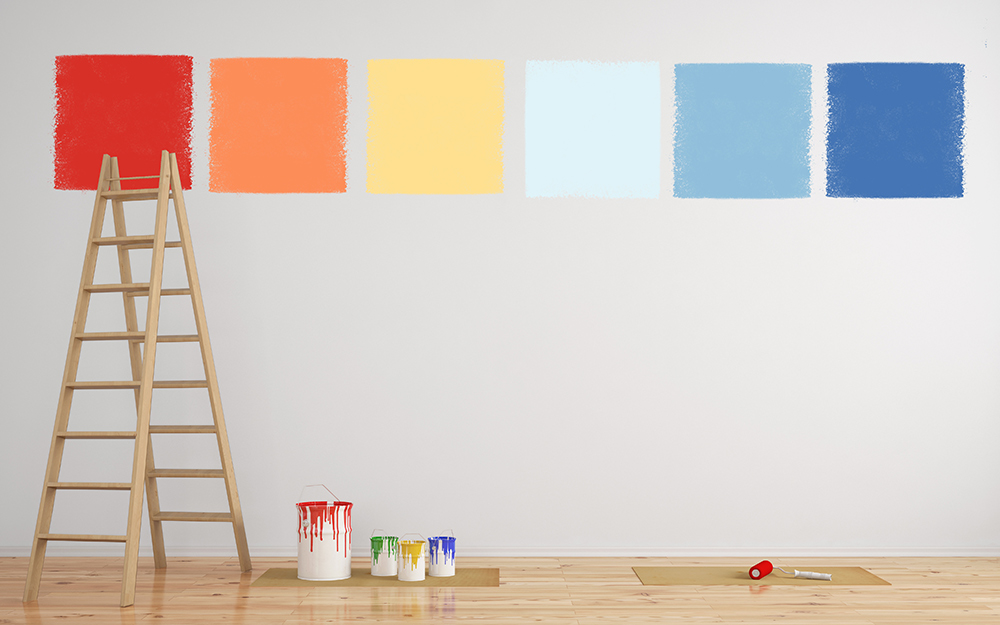
Once you've narrowed down your interior paint choices, test how each potential color looks in both natural light and indoor lighting. The easiest way to do this is to get sample cans and paint test strips of the colors.
- Paint large squares of the sample color directly on your wall. You can also paint onto poster board and hang it on the wall(s) you want to paint. This trick is the best way to see how paint will actually look in a room.
- For best color representation, paint at least two layers. Use paint primer so that the previous wall color does bleed through the test strip and affect the new color’s appearance.
- Paint test strips at eye level so that you can see them from a distance.
- For large rooms, paint test strips on two walls. Color changes based on how much light it receives.
Transition Color Throughout Your Home
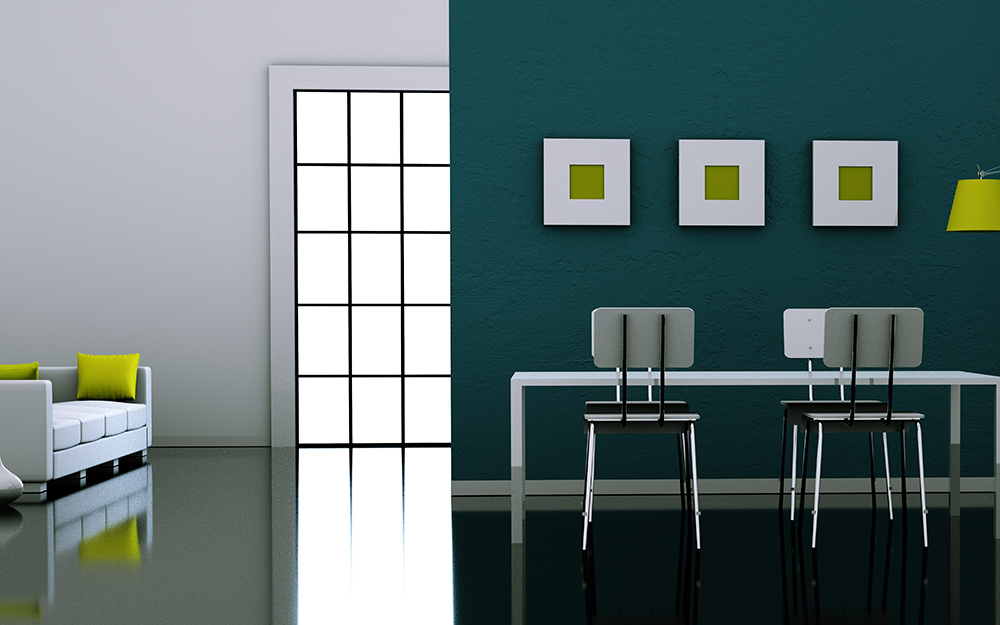
Once you know how to choose paint colors for a room, the next step is to transition it seamlessly throughout the rest of your home.
- When working with different colors for each room, a good rule of thumb is to use a darker or lighter color in adjacent rooms. For example, if your dining room is a light gray, then consider painting the adjacent living room a dark blue.
- Choose a flow-through paint. Decide on a main color to use in hallways, the foyer, connecting spaces and the main living area. This strategy works well in open floor plans.
- When standing in one room, consider all the adjacent rooms that you can see. Make sure all the visible rooms are painted colors that work well together. For example, if you can see into the living room and kitchen from the foyer, all three of the rooms’ colors should coordinate. Bedrooms, however, don’t necessarily need to coordinate their wall colors because they are often behind closed doors.
- Choose colors that have the same temperature (i.e. are all warm colors or are all cool colors) for nice flow.
- Tie rooms together with accent colors that match the colors of other rooms.
- Add drama with an accent or feature wall in a shade warmer or cooler than your main color.
- Bring coziness to tall rooms by painting the ceiling a darker color.
Tip: Add unity to a room color scheme by painting the trim in the same color but with a different finish.
Find Color Inspiration
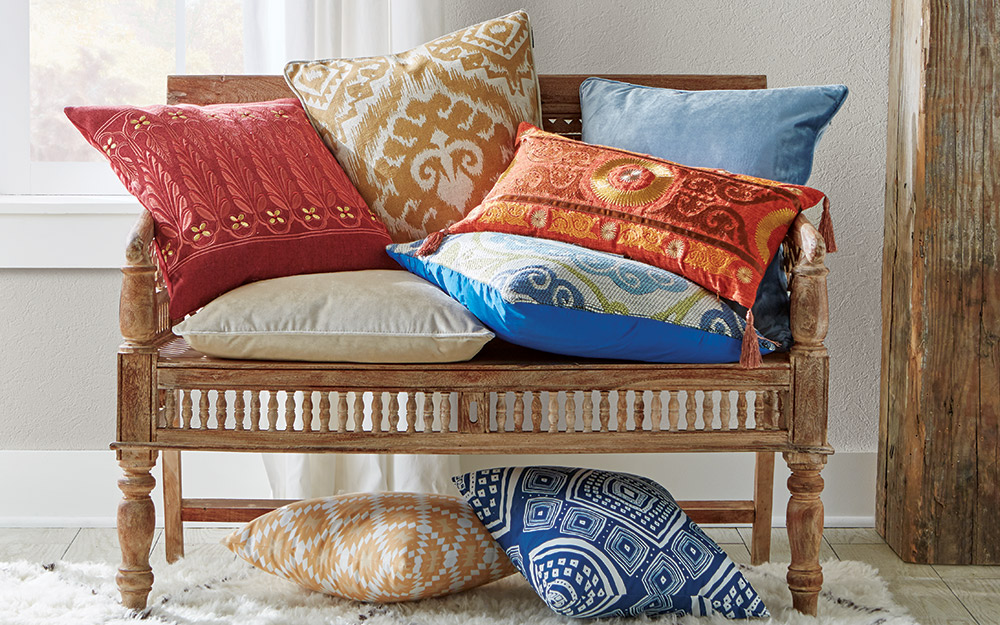
You don't have to choose paint colors on your own. Instead, look for inspiration around you.
- Designer fabrics provide a professional color palette, especially when it comes to ideas for coordinating colors.
- Bring the great outdoors indoors by drawing inspiration from the colors of nature. Think grassy greens and beachy blues.
- If you love a color but it’s not quite working in your room, you may just need to try a lighter or darker shade.
- Make neutrals interesting by mixing warm- and cool-toned neutral hues in one room.
- Try matching wall color to a color in your favorite piece of artwork or other home accent.
Paint is the easiest way to change the look of a room. It also offers endless possibilities and color schemes. Now that you know how to choose a paint color, order online with us at The Home Depot to get the painting supplies you need delivered free straight to your door.



































